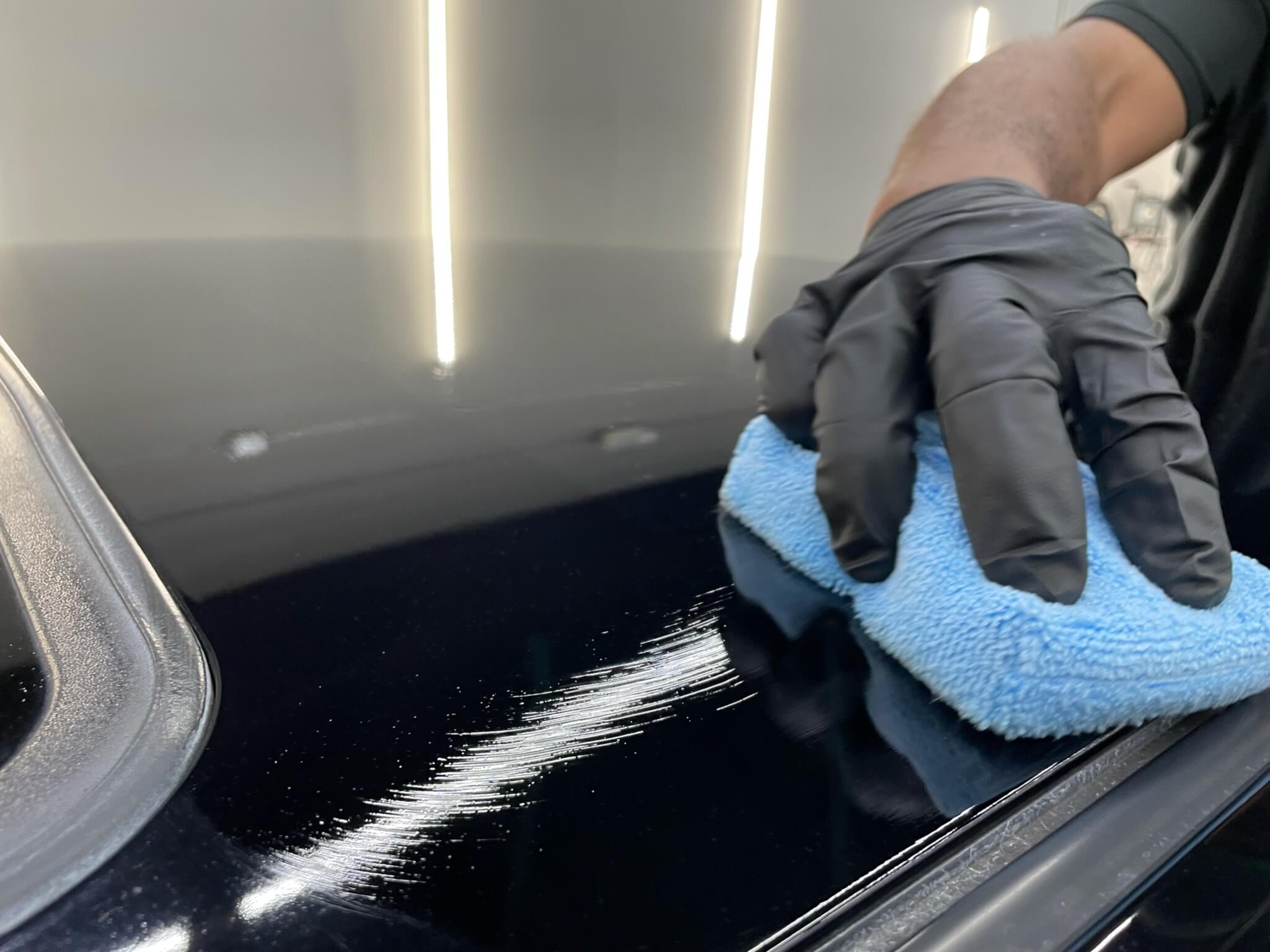Just How Ceramic Coating Philadelphia Keeps Your Automobile Looking New for Years
Just How Ceramic Coating Philadelphia Keeps Your Automobile Looking New for Years
Blog Article
Why Ceramic Coating Is the Ultimate Solution for a Remarkable Finish
Ceramic finishing has become a leading option for those looking for a remarkable finish for their cars, many thanks to its remarkable resilience and protective features. This sophisticated liquid polymer not only bonds seamlessly with manufacturing facility paint however likewise supplies a formidable barrier versus common risks such as scratches, UV rays, and environmental contaminants. Additionally, its hydrophobic buildings simplify upkeep while enhancing visual allure. Nevertheless, understanding just how this innovation contrasts to typical techniques and exploring its application subtleties can expose a lot more regarding its value. What variables really set ceramic coating apart?
What Is Ceramic Coating?

When used correctly, ceramic finish produces a hydrophobic surface area that drives away water and dust, making it less complicated to clean up and preserve. Unlike typical waxes or sealants, which usually supply short-term security, ceramic coverings can last for a number of years, relying on the item high quality and application approach. The process of using ceramic finish needs precise prep work, including complete cleansing and often repaint improvement, to make sure ideal bonding and performance.
Ceramic coatings are not limited to automotive surfaces; they can additionally be made use of on various products, consisting of glass, steel, and plastics, giving a flexible option for improving defense. On the whole, ceramic layer represents a substantial advancement in surface protection modern technology, combining both useful and aesthetic benefits for a vast array of applications.
Advantages of Ceramic Layer
While several surface area defense choices exist, the benefits of ceramic covering attract attention because of its distinct residential properties and lasting performance. One of the primary benefits is its exceptional sturdiness. Ceramic Coating Philadelphia. Unlike standard wax or sealers that require constant reapplication, ceramic layers give a resistant layer that can last for a number of years, considerably reducing upkeep efforts
Another notable benefit is improved security versus ecological pollutants. Ceramic finishings produce a hydrophobic surface that drives away water, dust, and numerous pollutants, making it less complicated to clean up. This function not just protects the vehicle's appearance however additionally lessens the threat of rust and oxidation, particularly in rough climate condition.
Moreover, ceramic coverings use remarkable resistance to UV rays, protecting against fading and destruction of paint gradually. This UV defense is essential for keeping the aesthetic worth of automobiles and surfaces subjected to route sunshine.
In addition, the shiny surface accomplished with ceramic layer boosts the overall aesthetic appeal, giving surface areas a showroom-quality sparkle. Overall, ceramic finishes stand for a significant improvement in surface area protection innovation, offering enduring advantages that satisfy both visual and useful needs.
Exactly How It Functions
Understanding the scientific research behind ceramic finishings reveals how they offer such impressive defense and long life. At its core, a ceramic coating is a liquid polymer that chemically bonds with the automobile's factory paint.
The application process entails multiple steps, including surface area preparation, which is vital to accomplishing ideal attachment. As soon as used, the finish undertakes a healing procedure, throughout which it hardens and forms a semi-permanent bond with the paint surface. This bond is what identifies ceramic finishes from typical waxes and sealants, providing a longer-lasting protective barrier that can withstand for years.
Additionally, the density of the finish can boost its safety high qualities, making certain that it can stand up to extreme problems. Inevitably, the science of ceramic coatings incorporates innovative products with cutting-edge application strategies to supply an unequaled level of defense and aesthetic improvement for cars.
Comparison With Traditional Techniques
When contrasted to standard paint protection techniques such as waxes and sealers,The advantages of ceramic coatings become particularly apparent. While waxes offer a short-lived shine, typically lasting a few weeks to a pair of months, ceramic finishings provide a durable safety layer that can endure for numerous years. This sturdiness significantly minimizes the frequency of reapplication, making ceramic coatings a more cost-efficient solution over time.
Additionally, standard methods usually need considerable preparation and multiple applications to achieve a satisfactory degree of security. In comparison, ceramic layers bond at a molecular degree with the car's surface, producing a durable guard against ecological impurities like UV rays, acid rain, and road salts. This bond boosts the automobile's resistance to scrapes and swirl marks, which prevail with typical waxes and sealants.
Moreover, the hydrophobic residential properties of ceramic finishings repel water and dust, resulting in less complicated cleaning and upkeep. On the other hand, wax and sealant-treated surface areas can attract go to my blog grime, demanding more frequent cleaning - Ceramic Coating Philadelphia. Generally, ceramic layers not just offer remarkable security but likewise supply an extra aesthetically attractive and enduring finish, establishing them as the favored option for critical car proprietors
Application and Upkeep Tips

Using a foam applicator, apply the covering in small areas, following the maker's standards concerning density and overlap. Allow adequate healing time between layers, typically 24 hr, to make certain appropriate bonding. After application, it is critical to stay clear of direct exposure to water or extreme aspects for a minimum of a week to enable the finish to completely heal.
For upkeep, wash the car regularly with pH-balanced soaps and prevent unpleasant products. Touchless auto laundries are suggested to decrease damaging. In addition, using a ceramic maintenance spray can improve the finish's hydrophobic residential properties and durability. Normal evaluations for any indications of wear will help preserve the finishing's integrity and preserve that beautiful coating.
Conclusion
In final thought, ceramic covering arises as an exceptional alternative advice for accomplishing a remarkable vehicle finish. By developing a robust bond with factory paint, ceramic coating successfully shields against scrapes, UV rays, and environmental pollutants.

Report this page